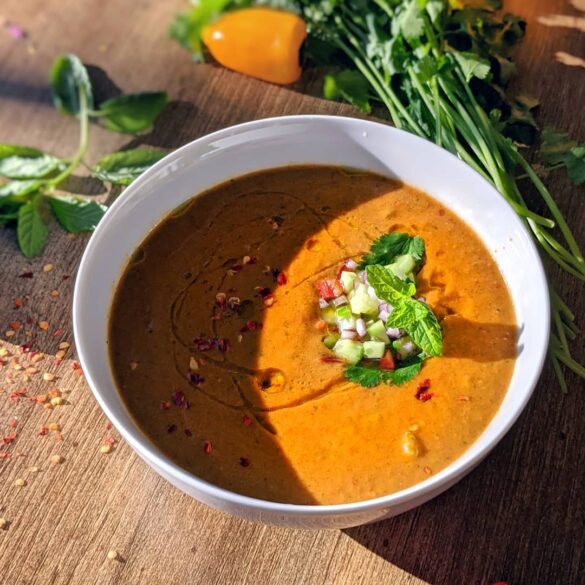В феврале мне повезло побывать в нереально живописной Андалусии, которая, по совместительству считается местом рождения гаспачо.
Я обожаю гаспачо, так что он был одним из первых блюд в моем списке маст трай. Кроме того – во всей андалузской кухне он был чуть ли не единственным (а нет, единственным) блюдом, сочетающим присутствие свежих овощей и отсутствие свинины в том или ином виде.
Так что, когда мне сказали – “ло сьенто, но гаспачо не будет т.к. не сезон” сказать, что я подрасстроилась – ничего не сказать. Тем не менее, добрые андалузцы предложили альтернативу в виде сальморехо. Сказали, разница небольшая – просто в этом меньше овощей и больше хлеба, а ещё – свинина и вареные яйца… в общем, сальморехо мы оставим на более холодные времена, а вот рецепт гаспачо летом думаю пригодится.
1. Я использую авокадо для более ЗОЖной версии гаспачо - в традиционной используется белый хлеб (кстати, еще один отличный способ использовать остатки подсохшего хлеба). Оба эти ингредиента хорошо взаимозаменяемы так как служат одной цели - сделать гаспачо более густым и сбалансировать кислоту и остроту других ингредиентов.
Ingredients
Instructions
Notes
2. Гаспачо - очень простое блюдо, поэтому важно помнить, что оно будет таким же вкусным (или невкусным), как и каждый отдельно взятый для него ингредиент. И если не сильно ароматный огурец ещё сможет пройти незамеченным, то невкусное оливковое масло и уксус- точно нет. (См. тест на хороший уксус в моем IGTV видео этого рецепта 🙂
3. Вариантов подачи гаспачо миллион- вы можете добавить свежие травы, такие как базилик, мята, петрушка, а также мелко нарезанные овощи, те же самые, что использовались в рецепте. На юге Испании младшего брата гаспачо- сальморехо, подают с хамоном и сваренным вкрутую яйцом - это тоже вариант. И конечно же, обязательно полейте каждую порцию небольшим количеством оливкового масла!


